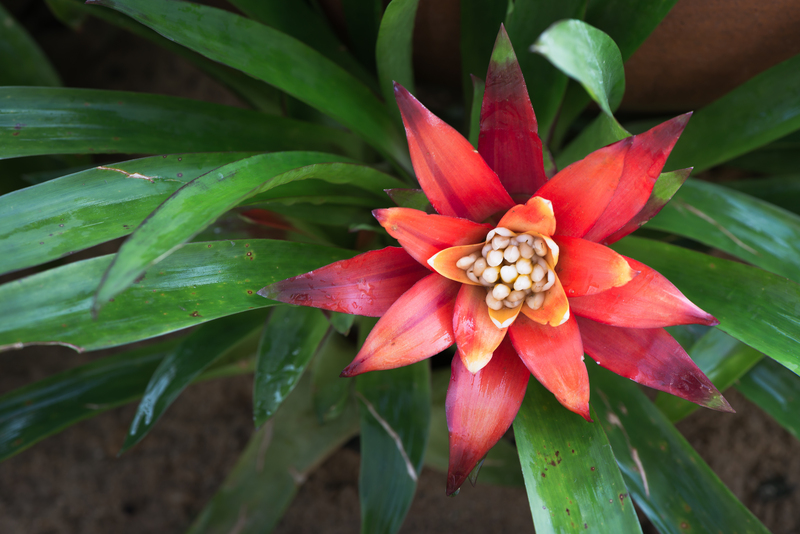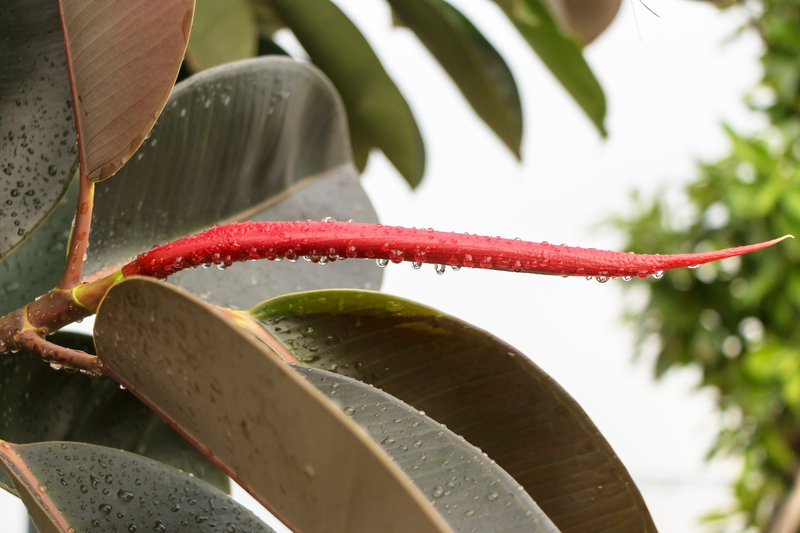Experience the joy of healthy orchid blooms
Posted on 14/08/2025
Experience the Joy of Healthy Orchid Blooms
Orchids have captivated plant lovers worldwide for centuries. Their exotic blooms, intricate beauty, and wide array of colors bring a touch of elegance to any space. Yet, achieving healthy orchid blooms can be a challenge for new and seasoned growers alike. In this guide, you'll uncover expert tips, actionable strategies, and little-known secrets to help you truly experience the joy of thriving, healthy orchid blooms in your home or garden.
Understanding Your Orchids: A Gateway to Abundant Blooms
To witness the lush beauty of vibrant orchid flowers year after year, understanding your plant is paramount. Orchids belong to one of the largest plant families, encompassing over 25,000 species. Each has unique characteristics, but most cultivated varieties like Phalaenopsis (moth orchid), Cattleya, and Dendrobium share common needs. Healthy orchid blooms rely on attentive care and awareness of species-specific requirements.
Why Orchids Struggle to Bloom
Are your orchids sporting lush green leaves but remain stubbornly flowerless? A few common culprits could be sabotaging your chance to experience magnificent orchid blossoms:
- Insufficient or improper lighting
- Poor watering practices
- Nutrient deficiencies
- Improper temperatures
- Lack of humidity
- Neglecting dormancy needs (especially for some species)

Essential Orchid Care Practices for Stunning Blooms
Unlocking the secret to healthy orchid flowers lies in mastering a handful of foundational care techniques. Let's delve into each, so you can cultivate robust plants that reward your efforts with dazzling blooms.
1. Illuminate Your Orchids: The Role of Light for Blooming Success
Lighting is critical for orchids. Most varieties crave bright, indirect light. Place your orchids near an east- or west-facing window with filtered sunlight. If natural light is insufficient, supplement with grow lights designed for orchids.
- Leaf Color as a Guide: Healthy leaves should appear light to medium green. Dark green leaves often mean too little light, while yellow or reddish spots signal sunburn.
- Rotate Regularly: Gently turn your orchid so all sides receive equal light, preventing lopsided growth.
2. Water Wisely: Avoiding Overwatering and Dehydration
Proper hydration is fundamental for healthy blooms on orchids. Orchids prefer drying out slightly between waterings. Overwatering is the top cause of root rot, while underwatering stresses the plant, halting bloom cycles.
- Watering Frequency: Most orchids need watering once a week, but this varies by season, potting media, and environment.
- Morning is Best: Water early to ensure leaves and roots dry out by night, reducing the risk of rot.
- Check Moisture: Insert your finger into the potting mix; if it feels dry, it's time to water.
3. Feed for Flowers: Orchid Fertilizer Fundamentals
Nutrient balance is key to experiencing the joy of healthy orchid flowers. Orchids benefit from regular but diluted feedings.
- Use Specialized Orchid Food: Choose a balanced (20-20-20) fertilizer or a blossom-boosting (higher phosphorus) type when initiating blooms.
- Monthly Flushing: Flush the pot with water once a month to prevent salt buildup from fertilizer.
- 'Weakly, weekly': Apply fertilizer at one-quarter or half strength every week for best results.
4. Potting Medium and Repotting: The Foundation of Healthy Orchid Blooms
Unlike typical houseplants, most orchids thrive in bark, sphagnum moss, or specially formulated orchid mixes. These mediums provide excellent drainage and air flow to the roots.
- Repot Every 1-2 Years: This prevents root crowding and removes decomposed media that causes rot.
- Choose the Right Pot: Use clear plastic pots with drainage holes to easily monitor root health and soil moisture.
Environmental Factors for Robust Orchid Flowers
Temperature and Humidity for Healthy Orchid Blooms
Orchids flourish in environments that mimic their natural tropical habitats. This means warm temperatures during the day and slightly cooler nights--typically 65-80?F (18-27?C) by day, with 10-15?F (5-8?C) drops at night. Humidity should hover between 40-70% for optimal health.
- Humidity Hacks: Use a humidifier, place the pot on a pebble tray with water, or group plants together to raise air moisture.
- Air Movement: Ensure gentle air circulation to prevent fungal and bacterial diseases.
Dormancy and Rest Periods
Some orchids, including Cymbidium and Dendrobium, need a dormancy period after flowering. During this phase, reduce watering and fertilizer to allow the plant to rest and gather strength for future magnificent blooms.
Top Secrets for Experiencing Healthy Orchid Flowers Year After Year
Achieving consistent, robust orchid blooming success involves more than meeting basic requirements. Here are pro tips for exceptional results:
- Shock Them to Bloom: Simulate nature by lowering night temperatures for a few weeks. This triggers some orchids to set buds.
- Watch for Pests: Routinely inspect for aphids, mealybugs, and spider mites that can damage flowers and stunt blooms.
- Leave the Flower Spike: On Phalaenopsis, don't cut off the flower spike immediately when blooms fade. A secondary spike may emerge for another flush of flowers.
- Be Patient: Some species only bloom once a year, but healthy plants reward you with spectacular displays.
Creative Ideas for Displaying Healthy Orchid Blooms
Once your orchids burst into flower, you'll want to showcase their stunning beauty. Here are creative display ideas to maximize your enjoyment of healthy orchid blossoms:
- Glass Terrariums: Place mini orchids in clear containers to enhance their delicate appeal.
- Living Walls: Mount epiphytic orchids on bark or cork for a vertical garden of color.
- Table Centerpieces: Arrange multiple blooming orchids with moss, stones, and decorative accents.
Frequently Asked Questions About Enjoying Healthy Orchid Flowers
How long do healthy orchid blooms last?
Depending on variety and care, healthy orchid blooms may last from several weeks to months. Phalaenopsis is especially prized for its long-lasting flowers, often blooming for up to three months with proper care.
What should I do if my orchid refuses to bloom?
Orchids not blooming can often be coaxed with a few changes:
- Increase light exposure if safe for the plant
- Try a high-phosphorus "bloom booster" fertilizer
- Ensure required drop in night temperatures
- Check root health and repot if roots are brown or mushy
Should I cut the old flower stalk after blooms drop?
For Phalaenopsis orchids, you can cut the flower spike just above a node to encourage a secondary bloom. For other species, it's often best to cut the spike down to the base.
Common Orchid Mistakes That Sabotage Healthy Blooms
- Overwatering: Roots need airflow. Always allow your orchid media to dry slightly between watering sessions.
- Neglecting Fertilization: Feeding is essential for continued blooming vigor.
- Incorrect Light: Most orchids require "bright shade." Avoid too much direct sun, which burns delicate leaves.
- Ignoring Seasonal Needs: Adjust care as needed throughout the year, especially during dormancy periods.
- Failing to Repot: Orchids can suffocate in spent, acidic media. Repot regularly!

Orchid Varieties for Easy, Repeat Blooms
If you're eager to enjoy reliable, healthy blooming orchids as a beginner, start with these varieties:
- Phalaenopsis (Moth Orchid) - Long-lasting and widely available.
- Cattleya - Known for vibrant color and intoxicating scent.
- Dendrobium - Striking canes that burst with color.
- Oncidium (Dancing Lady) - Prolific, with charming sprays of flowers.
These forgiving orchids are perfect for those just learning how to care for healthy orchid blooms.
Conclusion: Bringing the Joy of Healthy Orchid Blooms Into Your Life
Experiencing the joy of healthy orchid flowers is one of the most rewarding pleasures for plant lovers. With the right knowledge, dedication, and a touch of patience, anyone can transform their home into an orchid oasis filled with vibrant blossoms. Start by choosing robust varieties, master essential care practices, and immerse yourself in the fascinating world of orchid cultivation.
With every bloom, you'll not only enhance your living space but also nurture your sense of accomplishment and joy. So embark on your orchid adventure today--and experience the true delight of healthy orchid blooms!

